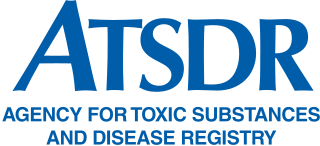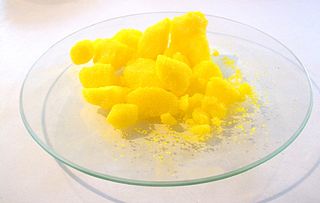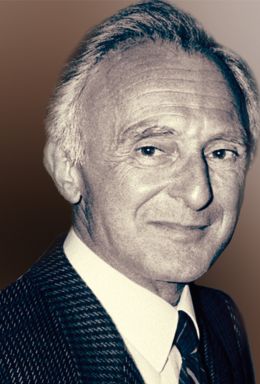
Formaldehyde ( for-MAL-di-hide, fər-) (systematic name methanal) is an organic compound with the formula CH2O and structure H−CHO. The compound is a pungent, colourless gas that polymerises spontaneously into paraformaldehyde (refer to section Forms below). It is stored as aqueous solutions (formalin), which consists mainly of the hydrate CH2(OH)2. It is the simplest of the aldehydes (R−CHO). It is produced commercially as a precursor to many other materials and chemical compounds. In 2006, the global production rate of formaldehyde was estimated at 12 million tons per year. It is mainly used in the production of industrial resins, e.g., for particle board and coatings. Small amounts also occur naturally.

Vinyl chloride is an organochloride with the formula H2C=CHCl. It is also called vinyl chloride monomer (VCM) or chloroethene. This colorless compound is an important industrial chemical chiefly used to produce the polymer, poly(vinyl chloride) (PVC). Vinyl chloride monomer is among the top twenty largest petrochemicals (petroleum-derived chemicals) in world production. The United States remains the largest vinyl chloride manufacturing region because of its low-production-cost position in chlorine and ethylene raw materials. China is also a large manufacturer and one of the largest consumers of vinyl chloride. Vinyl chloride is a flammable gas that has a sweet odor and is carcinogenic. It can be formed in the environment when soil organisms break down chlorinated solvents. Vinyl chloride that is released by industries or formed by the breakdown of other chlorinated chemicals can enter the air and drinking water supplies. Vinyl chloride is a common contaminant found near landfills. Before the 1970s, vinyl chloride was used as an aerosol propellant and refrigerant.

Trichloroethylene (TCE) is a halocarbon with the formula C2HCl3, commonly used as an industrial degreasing solvent. It is a clear, colourless, non-flammable, volatile liquid with a chloroform-like pleasant mild smell and sweet taste. Its IUPAC name is trichloroethene. Trichloroethylene has been sold under a variety of trade names. Industrial abbreviations include TCE, trichlor, Trike, Tricky and tri. Under the trade names Trimar and Trilene, it was used as a volatile anesthetic and as an inhaled obstetrical analgesic in millions of patients. It should not be confused with the similar 1,1,1-trichloroethane, which is commonly known as chlorothene.

The Agency for Toxic Substances and Disease Registry (ATSDR) is a federal public health agency within the United States Department of Health and Human Services. The agency focuses on minimizing human health risks associated with exposure to hazardous substances. It works closely with other federal, state, and local agencies; tribal governments; local communities; and healthcare providers. Its mission is to "Serve the public through responsive public health actions to promote healthy and safe environments and prevent harmful exposures." ATSDR was created as an advisory, nonregulatory agency by the Superfund legislation and was formally organized in 1985.

Lindane, also known as gamma-hexachlorocyclohexane (γ-HCH), gammaxene, Gammallin and benzene hexachloride (BHC), is an organochlorine chemical and an isomer of hexachlorocyclohexane that has been used both as an agricultural insecticide and as a pharmaceutical treatment for lice and scabies.

Bromoform is an organic compound with the chemical formula CHBr3. It is a colorless liquid at room temperature, with a high refractive index and a very high density. Its sweet odor is similar to that of chloroform. It is one of the four haloforms, the others being fluoroform, chloroform, and iodoform. It is a brominated organic solvent. Currently its main use is as a laboratory reagent. It is very slightly soluble in water and is miscible with alcohol, benzene, chloroform, ether, petroleum ether, acetone and oils.

Sawdust is a by-product or waste product of woodworking operations such as sawing, sanding, milling and routing. It is composed of very small chips of wood. These operations can be performed by woodworking machinery, portable power tools or by use of hand tools. In some manufacturing industries it can be a significant fire hazard and source of occupational dust exposure.
Cadmium is a naturally occurring toxic metal with common exposure in industrial workplaces, plant soils, and from smoking. Due to its low permissible exposure in humans, overexposure may occur even in situations where trace quantities of cadmium are found. Cadmium is used extensively in electroplating, although the nature of the operation does not generally lead to overexposure. Cadmium is also found in some industrial paints and may represent a hazard when sprayed. Operations involving removal of cadmium paints by scraping or blasting may pose a significant hazard. The primary use of cadmium is in the manufacturing of NiCd rechargeable batteries. The primary source for cadmium is as a byproduct of refining zinc metal. Exposures to cadmium are addressed in specific standards for the general industry, shipyard employment, the construction industry, and the agricultural industry.
The International Agency for Research on Cancer is an intergovernmental agency forming part of the World Health Organization of the United Nations. Its role is to conduct and coordinate research into the causes of cancer. It also collects and publishes surveillance data regarding the occurrence of cancer worldwide.
Substances, mixtures, and exposure circumstances in this list have been classified as group 1 by the International Agency for Research on Cancer (IARC): The agent (mixture) is carcinogenic to humans. The exposure circumstance entails exposures that are carcinogenic to humans. This category is used when there is sufficient evidence of carcinogenicity in humans. Exceptionally, an agent (mixture) may be placed in this category when evidence of carcinogenicity in humans is less than sufficient. Still, there is sufficient evidence of carcinogenicity in experimental animals and strong evidence in exposed humans that the agent (mixture) acts through a relevant mechanism of carcinogenicity.

An environmental hazard is a substance, state or event which has the potential to threaten the surrounding natural environment or adversely affect people's health, including pollution and natural disasters such as storms and earthquakes. It can include any single or combination of toxic chemical, biological, or physical agents in the environment, resulting from human activities or natural processes, that may impact the health of exposed subjects, including pollutants such as heavy metals, pesticides, biological contaminants, toxic waste, industrial and home chemicals.

Hexavalent chromium (chromium(VI), Cr(VI), chromium 6) is chromium in any chemical compound that contains the element in the +6 oxidation state (thus hexavalent). The hexavalent form rarely occurs naturally.

Ethyl acrylate is an organic compound with the formula CH2CHCO2CH2CH3. It is the ethyl ester of acrylic acid. It is a colourless liquid with a characteristic acrid odor. It is mainly produced for paints, textiles, and non-woven fibers. It is also a reagent in the synthesis of various pharmaceutical intermediates.

1,3-Dichloropropene, sold under diverse trade names, is an organochlorine compound with the formula C3H4Cl2. It is a colorless liquid with a sweet smell. It is feebly soluble in water and evaporates easily. It is used mainly in farming as a pesticide, specifically as a preplant fumigant and nematicide. It is widely used in the US and other countries, but is banned in 34 countries.
The Omega Chemical Corporation was a refrigerant and solvent recycling company that operated from 1976 to 1991 in Whittier, California. Due to improper waste handling and removal, the soil and groundwater beneath the property became contaminated and the area is now referred to as the Omega Chemical Superfund Site. Cleanup of the site began in 1995 with the removal of hazardous waste receptacles and a multimillion-dollar soil vaporization detoxifying system.

Lorenzo (Renzo) Tomatis was an Italian physician and experimental oncologist who researched carcinogenesis and its primary prevention
Emmell's Septic Landfill (ESL) is located at 128 Zurich Ave, Galloway Township, New Jersey and takes up about 38 acres of space. The landfill was in operation from 1967 until 1979. ESL disposed of liquid and solid waste including many chemicals such as volatile organic compounds (VOCs), Polychlorinated Biphenyls (PCBs), Trichloroethene and Vinyl chloride which all had their own effect on the environment and community. These chemicals affected the groundwater required millions of dollars to reconstruct the groundwater pathways and provide clean water to residents. The landfill holds a Hazardous Ranking Score of a 50/100, qualifying for the Superfund National Priority List. In August 1999, the state acknowledged the site's contamination and held town meetings and provided research upon the site such as groundwater samples. In July 1997, a sitewide investigation was called upon by the United States Environmental Protection Agency. In total the clean up was estimated to cost $5 million to fund this superfund site, and a grant of $3.9 million was given by the Federal Government under the Recovery Act Funding (Previti). Today, the project is still ongoing however, greatly improved since the landfill was discovered.
The Horseshoe Road Complex Superfund Site in Sayreville, New Jersey is a 12-acre property located near the Raritan River. The industrial site has been out of operation since the early 1980s after a fire revealed 70 drums containing silver cyanide, ethyl acetate, and acetonitrile. The drums caught the attention of the Environmental Protection Agency (EPA) and by 1995 the Horseshoe Road Complex was on the National Priorities List. The site had three areas consisting of the Atlantic Development Corporation (ADC), Horseshoe Road Drum Dump, and Sayreville Pesticide Dump. The neighboring Atlantic Resources Corporation, the location for precious metal recovery, is addressed with the Horseshoe Road Complex (HRC) site due to the intermixing of chemical contamination. The on-site contamination is not an immediate threat to the surrounding community, although prolonged or repeated exposure to the site itself, will result in health effects. The HRC Superfund site is now in its final steps of cleanup in accordance to the EPA's plan.
The Orange Valley Regional Groundwater Superfund site is a group of wells in Orange and West Orange, two municipalities in Essex County, New Jersey, United States. The groundwater in the public wells are contaminated with the hazardous chemicals of Trichloroethylene (TCE), Dichloroethene (DCE), Tetrachloroethylene (Perchloroethene), 1,1-Dichloroethene (1,1-DCE), and 1,2-Dichloroethene (1,2-DCE). These chemicals pose a huge risk to the towns nearby population, as the wells are a source of public drinking water. In March 2012, the site was added to the National Priorities List (NPL) of the United States Environmental Protection Agency (EPA) Superfund site list.













